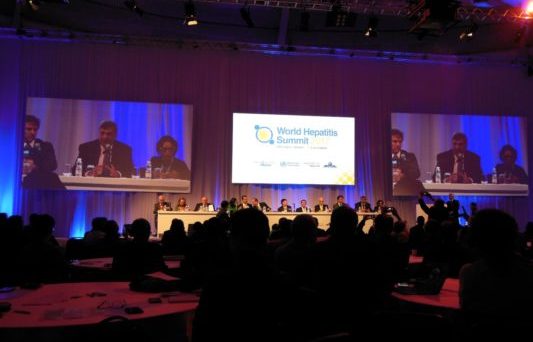
The task ahead is enormous, but we have all it takes to achieve [this goal]
Raquel Peck, recently cured of hepatitis and current CEO of the WHA, opened the World Hepatitis Summit by speaking to the WHO’s goal to eliminate hepatitis by 2030: “the task ahead is enormous, but we have all it takes to achieve [this goal] … the solution already exists; we can do this, and we will do this.”
Indeed, we are steadily moving forward to reaching the elimination goal by 2030, including a treatment target of 80% of eligible persons; for example, 1.76 million people were newly treated for hepatitis C (HCV) in 2016, compared to 1.1 million in 2015.
That’s a big success story and one worth celebrating, but we as a community still have a lot of significant challenges to overcome, particularly in relation to diagnosis.
There are major gaps which remain in diagnosing HCV, improving harm reduction, not to mention testing and treatment. And while today 82 countries have a viral hepatitis plan – a huge leap from 17 in 2012 – currently only 35% of these have dedicated funding to support the plans.
Individually, each country must make their own commitments towards elimination
Individually, each country must make their own commitments towards elimination. For example, Egypt is now treating everyone with hepatitis C and is confident in reaching WHO goals earlier than planned, while China is focused on prevention, improving quality of life for existing patients, and eliminating mother to child infection.
As with any health campaign, raising awareness is at the forefront of everyone’s minds – especially considering that access to information may be a particular problem in less developed countries. That’s the issue the #NOHep campaign has singled out for solving.
There is also a need to address misconceptions and attitudes about elimination itself – the word makes people cautious because they know that today so many individuals remain undiagnosed, and many diagnosed are still untreated. Efforts to drive early diagnosis are hugely helpful, but perhaps more could be done to close the gaps in perceptions of elimination between policymakers, healthcare professionals, and patients.
I have seen the inroads being made in building a supportive community, and the rising momentum behind the movement
As a member of the Committed to Cure coalition, I have seen the inroads being made in building a supportive community, and the rising momentum behind the movement. A widespread cooperative ethos is required if we are to build an environment where patients feel heard and reassured, and where stakeholders and healthcare professionals better understand the point of view of patients. It gives me hope that the systems can change.
Committed to Cure is a European initiative supporting a future free from hepatitis C by raising awareness of the disease, highlighting the significance of cure and why it matters.
Hepatology, Medicine and Policy is now accepting submissions on this and related issues. For more information, visit: www.hmap.biomedcentral.com.
Comments